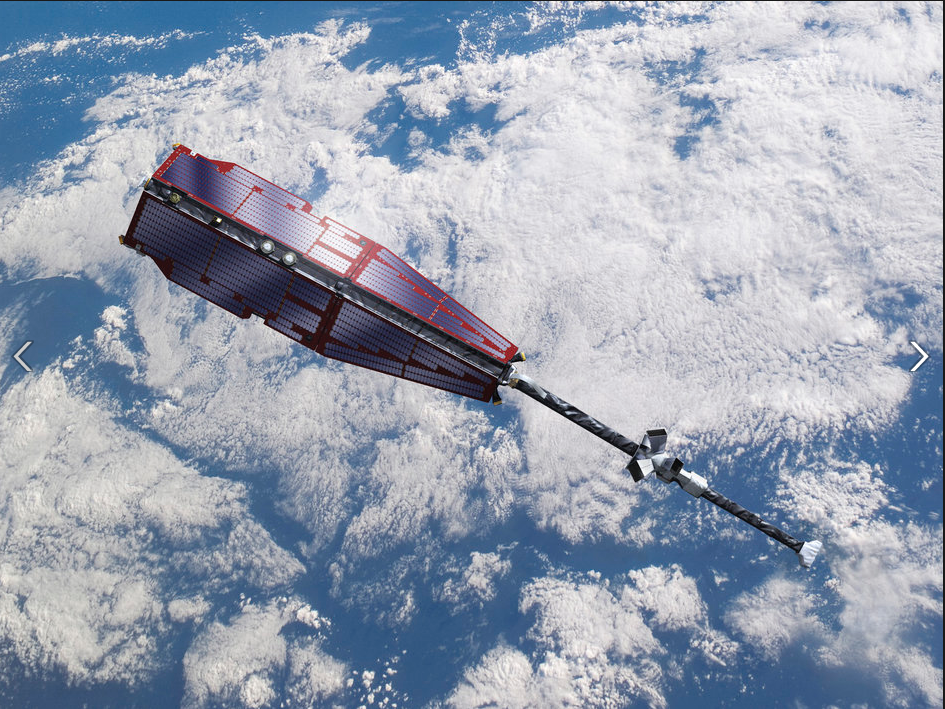[SatNews] ...will monitor Earth’s magnetic field, from the depth of our planet’s core to the heights of its upper atmosphere.
ESA’s three-satellite Swarm constellation was lofted into a near-polar orbit by a Russian Rockot launcher where for a period of four years, it will monitor Earth’s magnetic field, from the depth of our planet’s core to the heights of its upper atmosphere.
The Swarm satellites will provide unprecedented insights into the complex workings of the magnetic shield that protects Earth's biosphere from charged particles and cosmic radiation. They will perform precise measurements to evaluate its current weakening and understand how it contributes to global change.

Artist's view of Swarm on a Rockot. Swarm is ESA's first Earth observation constellation of satellites.
The Rockot launcher lifted off from the Plesetsk spaceport in northern Russia at 12:02 GMT (13:02 CET) on November 22.
Some 91 minutes later, its Breeze-KM upper stage released the three satellites into a near-polar circular orbit at an altitude of 490 km.
Contact was established with the trio minutes later through the Kiruna station in Sweden and the Svalbard station in Norway.
The three identical satellites are launched together on one rocket. Two satellites orbit almost side-by-side at the same altitude—initially at about 460 km, descending to around 300 km over the lifetime of the mission.
The third satellite is in a higher orbit of 530 km and at a slightly different inclination. The satellites’ orbits drift, resulting in the upper satellite crossing the path of the lower two at an angle of 90° in the third year of operations.
The different orbits along with satellites’ various instruments optimise the sampling in space and time, distinguishing between the effects of different sources and strengths of magnetism.
The field protects our planet from cosmic radiation and charged particles that bombard Earth in ‘solar winds’. Without this protective shield, the atmosphere as we know it would not exist, rendering life on Earth virtually impossible.
By analysing the different characteristics of the field, the mission will provide new insight into many natural processes, from those occurring deep inside the planet to weather in space caused by solar activity. In turn, this information will yield a better understanding of why the magnetic field is weakening.
All three satellites are controlled by ESA teams at the European Space Operation Centre in Darmstadt, Germany. Soon after they deployed their four m-long instrument booms. Over the next three months of commissioning, their scientific payloads will be verified and they will move to their respective operational orbits.
The lower pair will fly in formation side-by-jside, about 150 km (10 seconds) apart at the equator and at an initial altitude of 460 km, while the upper satellite will rise to a higher orbit, at 530 km.
“Swarm is about to fill a gap in our view of the Earth system and in our monitoring of global change issues,” noted Volker Liebig, ESA’s director for Earth observation.
“It will help us to better understand the field that protects us from the particles and radiation coming from the Sun.”
Swarm is ESA’s fourth Earth Explorer mission, coming after the successful CryoSat, GOCE and SMOS satellites. These are all missions that expand the knowledge of Earth and its environment.
The combination of data collected by Swarm will give precious information on the sources of the magnetic field inside Earth. This includes understanding how the magnetic field is related to the motion of molten iron in the outer core, how the conductivity of the mantle is related to its composition and how the crust has been magnetized over geological timescales.
They will also investigate how the magnetic field relates to Earth’s environment through the radiation belts and their near-Earth effects, including the solar wind energy input into the upper atmosphere.
Swarm will also be able to distinguish between the various sources of the planet’s magnetic field and ensure continuity in its monitoring from space in conjunction with measurements from ground observatories.
Earth's magnetic field plays a major role in protecting the biosphere because it generates a bubble around the planet that deflects charged particles and traps them in the radiation belts. This shielding protects all life on Earth from the bombardment of heavy ions coming from the Sun and deep space.
Since the 1980s, previous missions have showed this field to be weakening, which could be a sign that the north and south magnetic poles are beginning to reverse – known to have occurred on multiple occasions during geological times.
Although such inversions usually take thousands years to complete, a further weakening of magnetic protection could lead to an increase in events that damage the orbiting satellites or disrupt power grids and other electrical systems on the ground.

